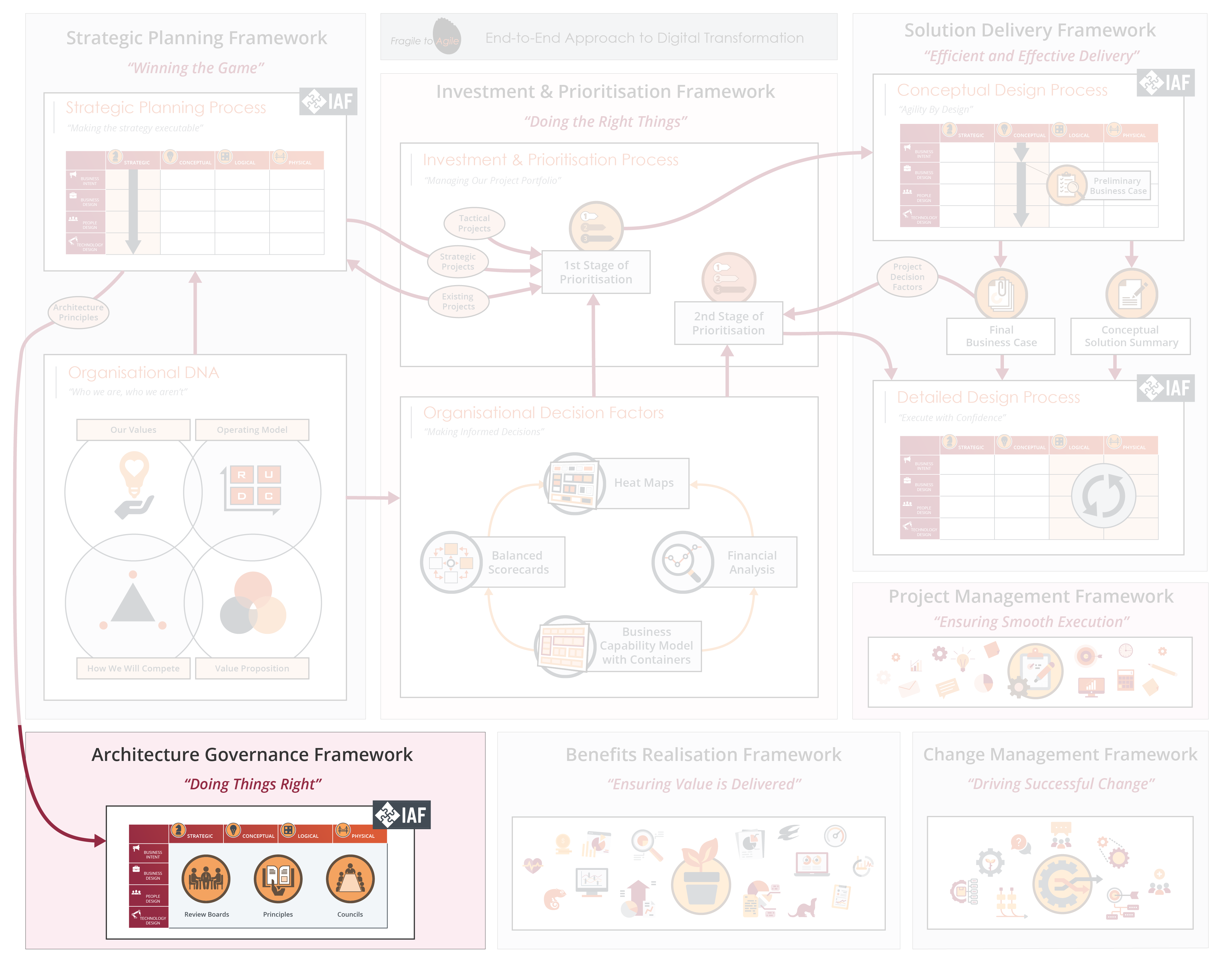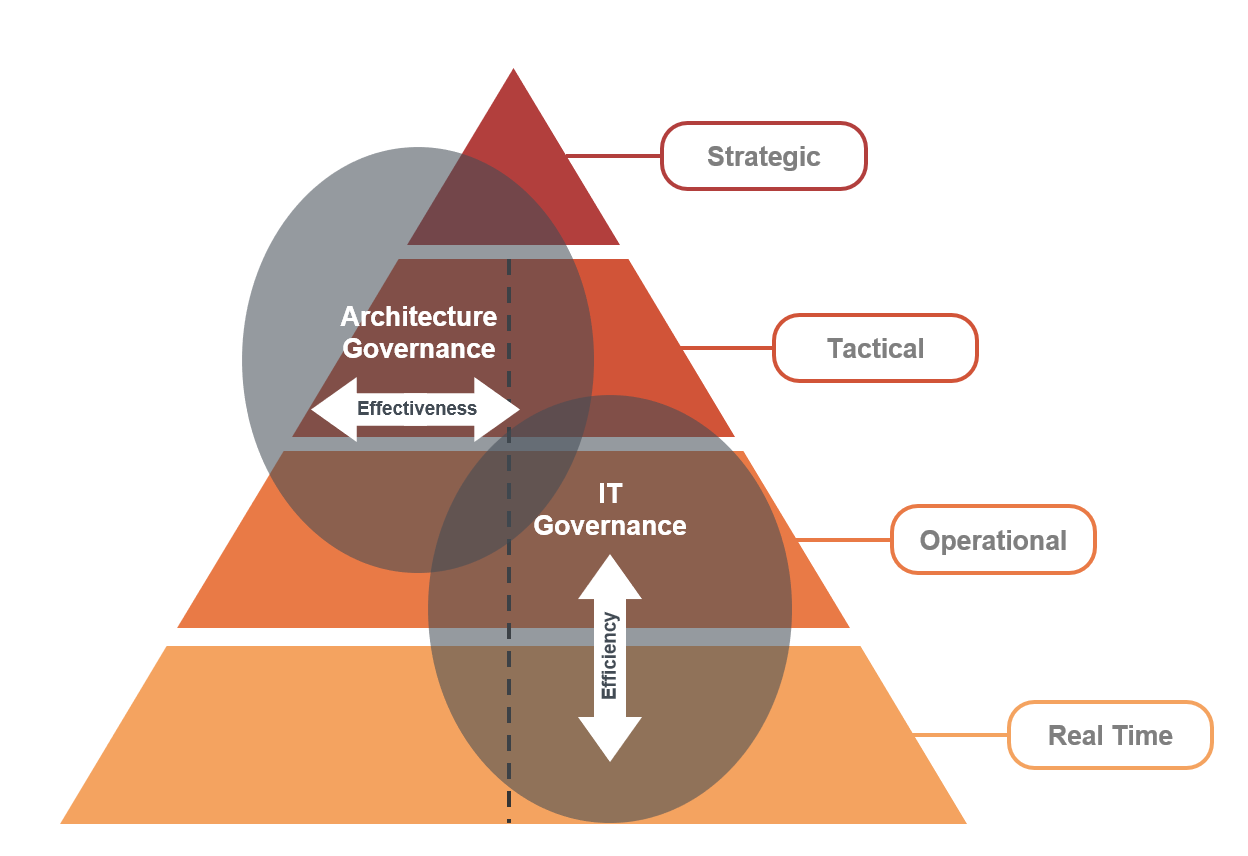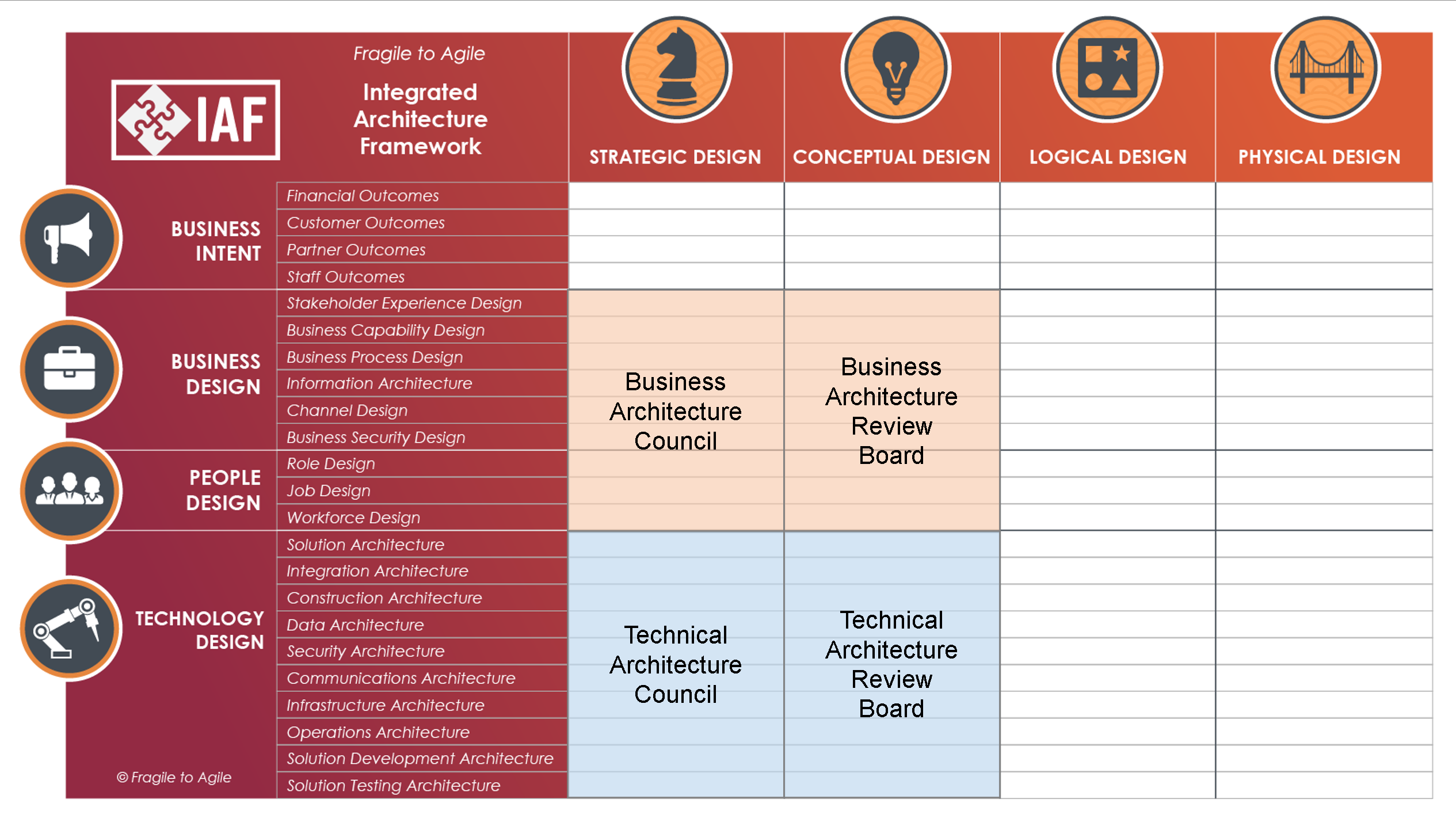Architecture Governance Framework – “Keeping Everyone Honest”

An analogy can be drawn between architecture governance and the Westminster system of government. Under the Westminster system there is a distinct separation between the bodies responsible for forming the legislation (parliament), interpreting the legislation (the courts) and enforcing it (the police). We believe that the same separation of powers is necessary for architecture governance and use the Strategic Planning Framework to form the legislation, the Conceptual Design Process to enforce the legislation and the Architecture Governance Framework to interpret and administer it.
According to our methodology, Enterprise Architecture encapsulates an organisation’s strategic business intent and the three primary design domains of business, people and technology. Therefore, a governance framework must oversee each domains’ architecture principles, standards and guidelines to ensure the design integrity of the business as a whole. Consequently, architecture governance extends to decisions that are outside the domain of IT and must be managed at an enterprise level. Consequently, the following illustration summarises the respective roles of Architecture Governance and IT Governance:

To avoid over engineering or unnecessary and constraining bureaucracy, the Architecture Governance Framework must be right sized for the size and scale of an organisation and its change program in order to facilitate rapid decision making. For larger organisations, we also use our Integrated Architecture Framework to ensure that there is an appropriate separation of concerns and understanding of responsibilities between Business and Technology Architecture Boards, as depicted by the following diagram:

